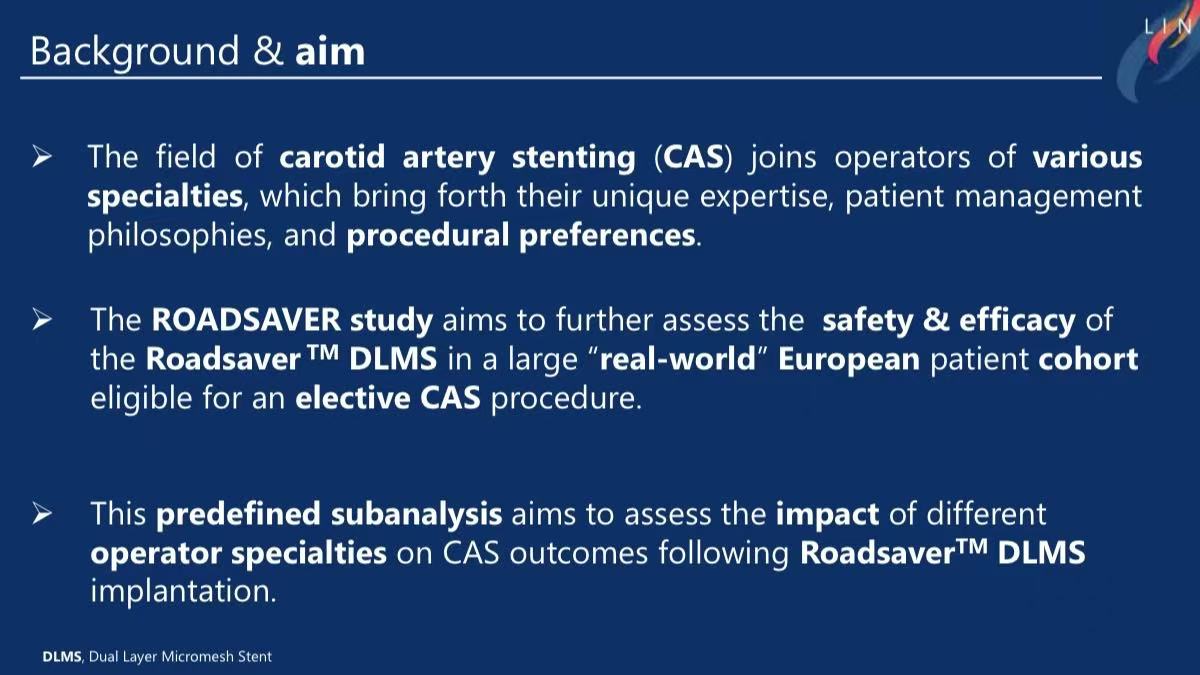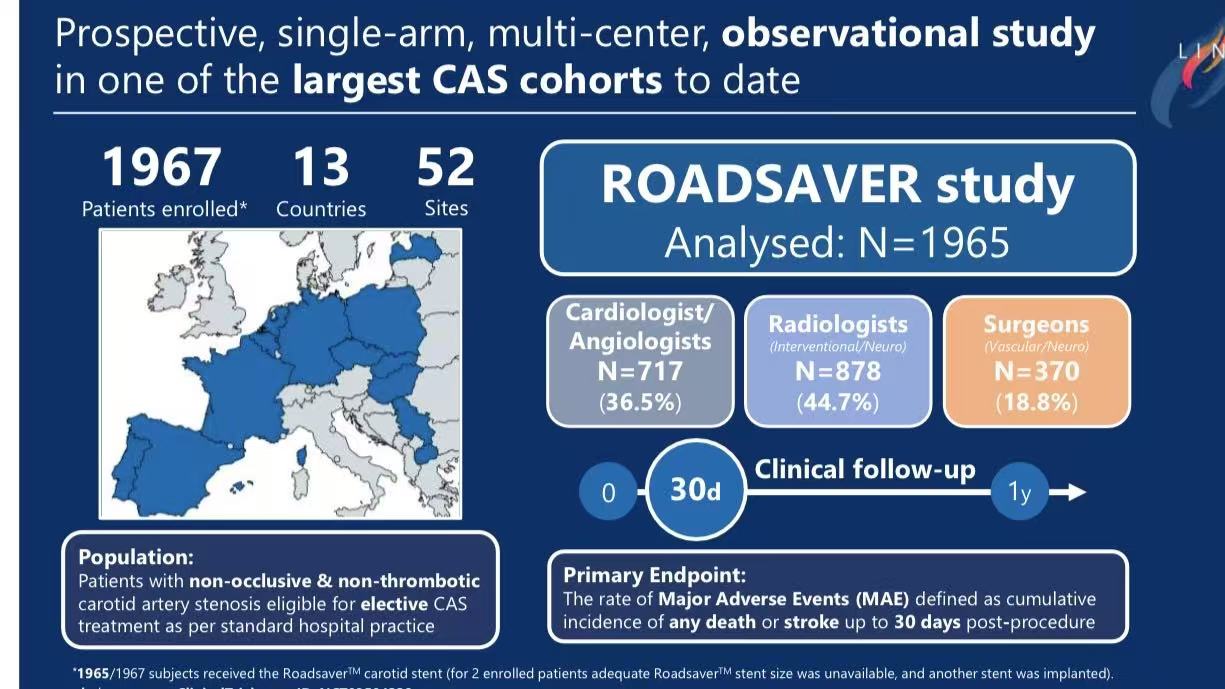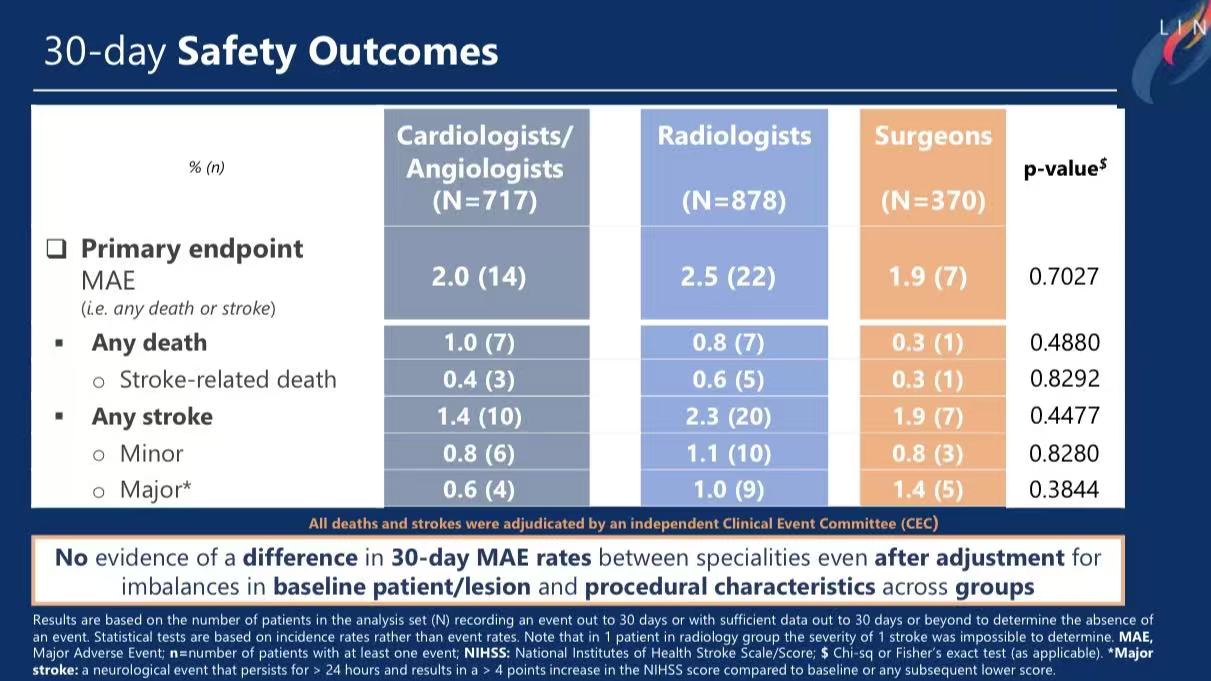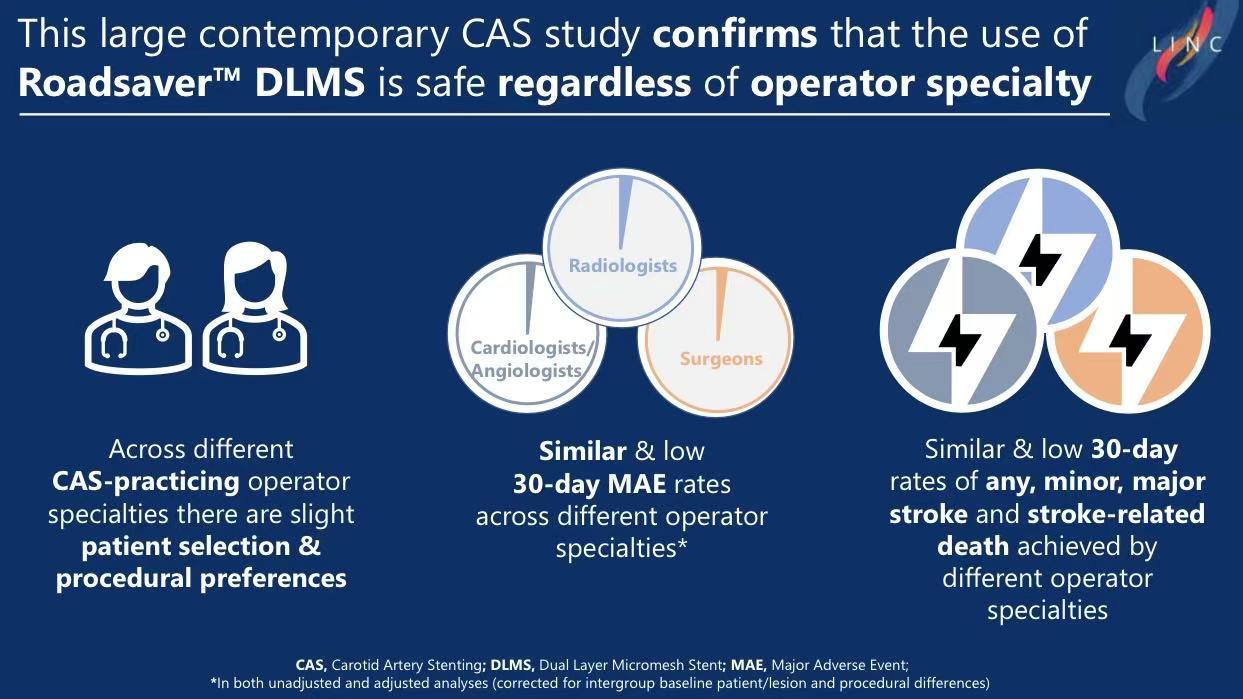Author: Dr. Arne Schwindt
Institution: Münster Hospital, Germany
Summary
This presentation, based on the ROADSAVER study, investigates the impact of different operator specialties (cardiology, radiology, and surgery) on carotid artery stenting (CAS) outcomes. The study included 1,965 patients treated with the ROADSAVER dual-layer micromesh stent (DLMS), aiming to evaluate whether operator specialty affects the incidence of 30-day major adverse events (MAE). Results indicate no significant differences in MAE rates across specialties, demonstrating consistent safety and effectiveness of the ROADSAVER stent regardless of operator specialty.
Study Background and Design
•Background: CAS procedures involve multidisciplinary experts (cardiologists, radiologists, and surgeons), whose knowledge and procedural preferences may impact postoperative outcomes. This study assesses the influence of operator specialty on the safety and efficacy of CAS.

•Design: The ROADSAVER study is a prospective, multicenter, observational study spanning 52 centers in 13 European countries, focusing on patients with non-occlusive and non-thrombotic carotid stenosis.

Primary Endpoint and 30-Day Safety Data
• Primary Endpoint: MAE was defined as any death or stroke event within 30 days post-procedure. Results showed MAE rates of 2.0% for cardiologists, 2.5% for radiologists, and 1.9% for surgeons, with no significant differences between groups.

• Stroke and Mortality Rates: Stroke rates within 30 days were below 3% across specialties, and mortality rates were also low, confirming the safety and stability of the ROADSAVER stent in multidisciplinary applications.

Baseline Differences and Influencing Factors
• Patient Selection and Procedural Preferences: Minor differences were observed in patient selection and procedural techniques across specialties. For example, cardiologists preferred the femoral approach, while radiologists more frequently used distal protection devices. Radiologists also treated a higher proportion of irregular lesions, which could potentially influence outcomes.
Conclusion
1. The ROADSAVER stent demonstrated consistent MAE rates across specialties, indicating that its safety is unaffected by operator specialty.
2. While there are minor differences in patient selection and procedural techniques among specialties, these do not significantly impact overall outcomes.
3. This study supports multidisciplinary collaboration in CAS, and future research could explore the impact of various surgical techniques on long-term outcomes.
Contact Us
• Email: endovascluar@simtomax.cn
The English content has been synchronized with the Vasco Knight account. For more international information, please visit:
• Facebook: Vasco Knight
• Instagram: knight_vasco
Let’s safeguard health together and showcase your brilliance to the world!


